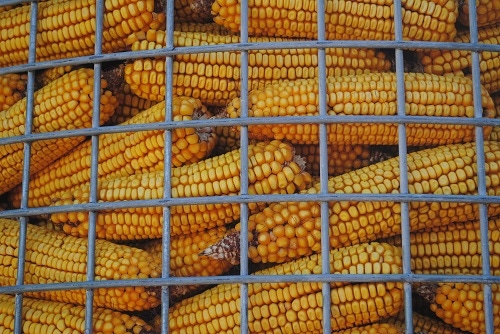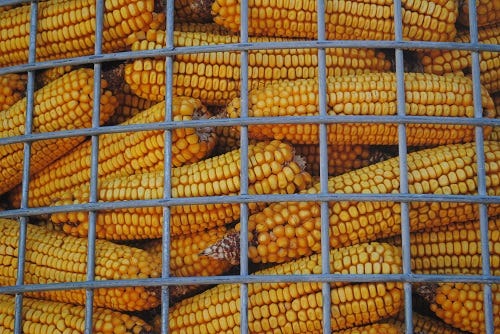
Lower corn prices stink. We can agree on that. When I started farming in the mid-1980s, I can still recall the corn crop I marketed for a barn-burning $1.47 per bushel and soybeans for $4.97 per bushel. The sting of those prices didn’t go away overnight. I guess I didn’t listen closely enough in my college ag marketing class, or to the even more sound wisdom of my Dad who always advised to market on the way up, instead of on the way down.

Of course, times have changed. It costs exponentially more today, from land to inputs, to get a crop into the ground, let alone safely in the bin, or better yet, trucked to the elevator for sale. But, we have to recognize that commodities are cyclical and low prices have been experienced before and will be again. One thing to remember is that when prices are low, you know higher prices must be on the horizon at some point.
WHAT DO YOU THINK? I’m writing today about three potentially positive things that come with lower corn prices. What are the things I’ve missed and what would you add to my list? I’d like to hear of your experiences and ideas. You can share your thoughts and observations, your dismay or nods of agreement in our comments section below.
Friendly to feeders. Crop farmers are struggling to make ends meet this season, but livestock producers are smiling. That’s the way it always is. The thing to remember is that you can’t have one without the other. We need each other. And, if you are diversified and have both crops and livestock as a high percentage of Nebraska farmers do, you can still break a smile. I covered my first tax information meeting for beef producers this past fall. The presenter noted with a grin that usually livestock producers don’t have to worry about paying income taxes. The past couple of years, this has thankfully changed. Besides, we all know that when profits push up in the livestock sector, farmers will feed more cattle and hogs, pushing the demand for grain up. That means higher crop prices down the road. With a long downward trend in national cow herd numbers, it is good to have strong profits in the beef industry to push the herd numbers up for once and to keep our crucial feeding and processing infrastructure in place. Friendly to feeders means eventually friendly to crops too.
Pencil pushing to find the most profitable inputs. Most farmers who have been at it for a while can run pretty lean when they have to. It isn’t a comfortable place to be and land and rent prices, along with property taxes, place producers in a tough spot. However, tough times only make us stronger when we come out on the other side. It forces producers to eliminate unnecessary expenses and inputs, to do their research and focus on the inputs that push yield and profits. It forces us to be more strategic in our planning and execution in the field, to be better pest scouts and nutrient scavengers. It may require us to think about implementing new technologies and efficiencies we had been putting off. In the long run, the situation will improve profits when grain prices go back up and it will push many farmers into a much stronger position when that happens. Trial by fire isn’t easy, but those of us who have been there know that it hardens and strengthens our resolve and our farming operations over time.
Resilient rotations. Farmers are adopting no-till, cover crops and technology to save soil and resources, protect water and produce more. Lower grain prices allow us the opportunity to plant a greater variety of crops that are better for the soil in the long run, and potentially more resilient to the impact of drought or other severe weather events. Diversifying our crop portfolio provides some cover from the ups and downs of individual grains, so one crop may outperform another, depending on the weather and market prices. It may allow us to consider cover crops more seriously, and work to manage them to improve our soil and profits. It may allow us to add cereal grains and alfalfa back into our operations, which also help break tough pest cycles and generally improve organic matter in the soil. When cash grain prices are lower, we aren’t as likely to chase the dollars. From experience, I would say we are more likely to look for long term gains in soil health, conservation and crop rotations that will help mitigate any severe weather on the horizon this summer.
There you go. Certainly, these factors individually won’t make the sting of lower prices go away, nor will they necessarily help pay farm bills piling up today. But what goes down will again go up, so it is a good time to make the most of the current market structure, and prepare ourselves for profits sure to come.
RELATED: Survivalist grain marketing - Corn and Soybean Digest
Be sure to catch the latest farm news several times a day at Nebraska Farmer online, and you can always follow us on Twitter at Husker Home Place #NebFarmNow.
About the Author(s)
You May Also Like






